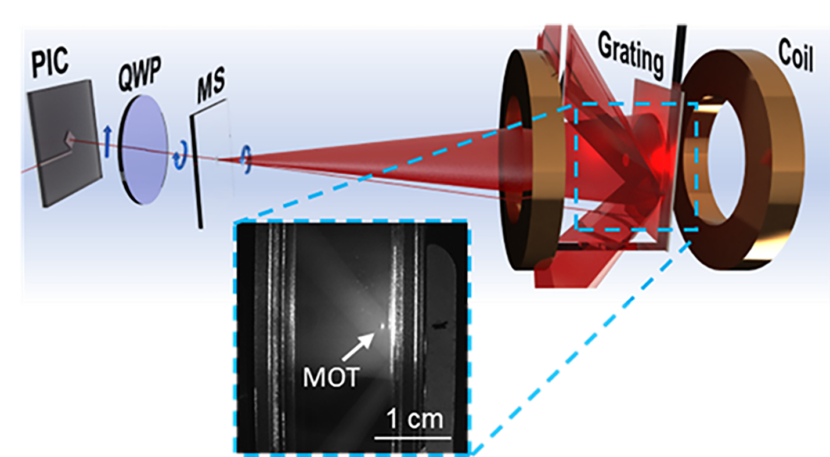
Scientists at the National Institute of Standards and Technology (NIST) have miniaturized the optical components required to cool atoms down to a few thousandths of a degree above absolute zero, the first step in employing them on microchips to drive a new generation of super-accurate atomic clocks, enable navigation without GPS, and simulate quantum systems.
The new optical system, while still about 10 times too big to fit on a microchip, is a key step toward employing ultracold atoms in a host of compact, chip-based navigation and quantum devices outside a laboratory setting.
Ultimately, making the light preparation smaller and less complicated will enable laser-cooling based technologies to exist outside of laboratories.
Illustration of a new optical system to miniaturize the laser cooling of atoms, a key step towards cooling atoms on a microchip. A beam of laser light is launched from a photonic integrated circuit (PIC), aided by an element called an extreme mode converter (EMC) that greatly expands the beam. The beam then strikes a carefully engineered, ultrathin film known as a metasurface (MS), which is studded with tiny pillars that further expand and shape the beam. The beam is diffracted from a grating chip to form multiple overlapping laser beams inside a vacuum chamber. The combination of laser beams and a magnetic field efficiently cools and traps a large collection of gaseous atoms in a magneto-optical trap (MOT).
Credit: NIST